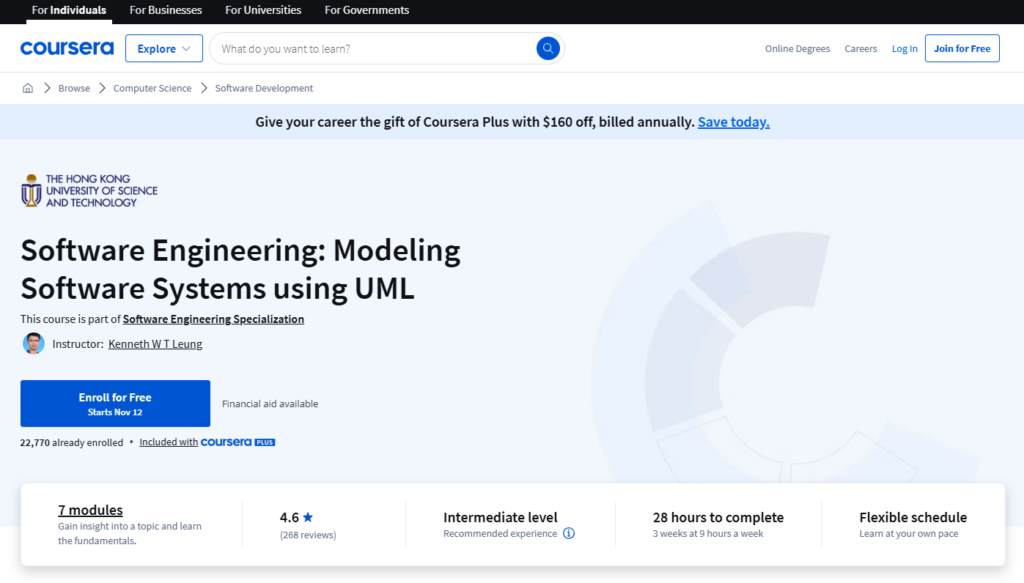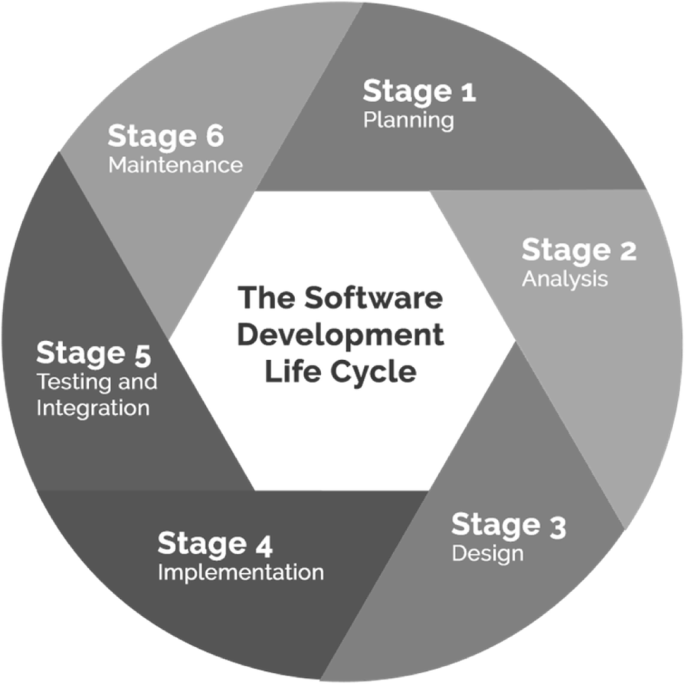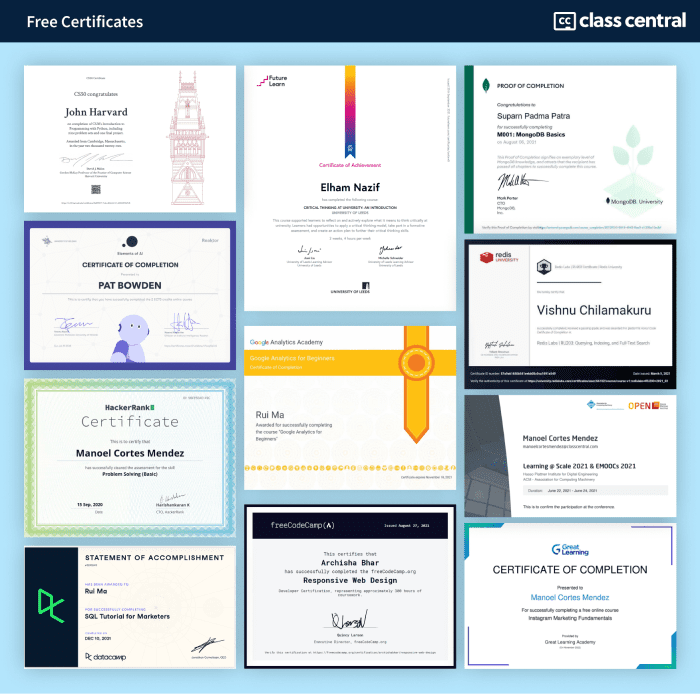All Categories
Featured
Table of Contents
- – The 5-Minute Rule for How To Become A Machine ...
- – The Definitive Guide for Machine Learning Boot...
- – Software Developer (Ai/ml) Courses - Career P...
- – Some Of Practical Deep Learning For Coders - ...
- – The Definitive Guide for 5 Best + Free Machi...
- – The Best Strategy To Use For Machine Learnin...
- – More About Training For Ai Engineers
Some people believe that that's cheating. Well, that's my entire profession. If someone else did it, I'm going to use what that individual did. The lesson is placing that apart. I'm forcing myself to analyze the feasible options. It's even more regarding taking in the content and attempting to apply those ideas and less about finding a library that does the work or searching for someone else that coded it.
Dig a little bit deeper in the mathematics at the start, so I can construct that structure. Santiago: Ultimately, lesson number 7. This is a quote. It claims "You have to comprehend every detail of an algorithm if you intend to use it." And afterwards I say, "I believe this is bullshit recommendations." I do not think that you have to comprehend the nuts and bolts of every formula before you use it.
I would have to go and examine back to actually get a better instinct. That does not indicate that I can not fix points using neural networks? It goes back to our arranging instance I assume that's just bullshit recommendations.
As a designer, I have actually serviced several, numerous systems and I've used lots of, numerous things that I do not understand the nuts and bolts of exactly how it works, also though I understand the impact that they have. That's the last lesson on that string. Alexey: The funny thing is when I consider all these collections like Scikit-Learn the algorithms they utilize inside to implement, for example, logistic regression or something else, are not the very same as the formulas we examine in device knowing courses.
The 5-Minute Rule for How To Become A Machine Learning Engineer (2025 Guide)
Also if we attempted to find out to obtain all these basics of equipment understanding, at the end, the algorithms that these collections use are various. Right? (30:22) Santiago: Yeah, definitely. I assume we need a whole lot extra pragmatism in the industry. Make a whole lot more of an influence. Or focusing on supplying value and a little bit much less of purism.

I generally speak to those that want to work in the market that want to have their impact there. I do not risk to talk about that because I don't understand.
Right there outside, in the sector, pragmatism goes a lengthy method for certain. (32:13) Alexey: We had a comment that stated "Really feels more like motivational speech than discussing transitioning." Perhaps we should switch over. (32:40) Santiago: There you go, yeah. (32:48) Alexey: It is an excellent motivational speech.
The Definitive Guide for Machine Learning Bootcamp: Build An Ml Portfolio
One of the points I desired to ask you. Initially, allow's cover a couple of points. Alexey: Allow's begin with core tools and structures that you need to learn to in fact change.
I know Java. I recognize SQL. I understand exactly how to utilize Git. I recognize Bash. Perhaps I recognize Docker. All these points. And I read about artificial intelligence, it looks like an awesome point. What are the core tools and frameworks? Yes, I watched this video clip and I get encouraged that I don't require to obtain deep right into math.
What are the core tools and frameworks that I need to find out to do this? (33:10) Santiago: Yeah, definitely. Fantastic inquiry. I assume, leading, you must start discovering a little bit of Python. Considering that you already know Java, I do not believe it's mosting likely to be a substantial shift for you.
Not due to the fact that Python is the same as Java, but in a week, you're gon na get a lot of the distinctions there. Santiago: Then you get certain core devices that are going to be used throughout your entire profession.
Software Developer (Ai/ml) Courses - Career Path Things To Know Before You Get This
That's a collection on Pandas for information control. And Matplotlib and Seaborn and Plotly. Those 3, or among those three, for charting and presenting graphics. After that you get SciKit Learn for the collection of equipment knowing algorithms. Those are tools that you're going to need to be using. I do not suggest just going and finding out about them unexpectedly.
Take one of those training courses that are going to begin introducing you to some troubles and to some core ideas of machine discovering. I don't keep in mind the name, however if you go to Kaggle, they have tutorials there for cost-free.
What's excellent about it is that the only requirement for you is to recognize Python. They're going to provide an issue and inform you just how to utilize choice trees to fix that certain problem. I think that process is incredibly effective, since you go from no device finding out background, to comprehending what the trouble is and why you can not address it with what you know right currently, which is straight software application engineering techniques.
Some Of Practical Deep Learning For Coders - Fast.ai
On the various other hand, ML designers specialize in structure and deploying maker understanding designs. They concentrate on training models with information to make forecasts or automate jobs. While there is overlap, AI designers deal with more diverse AI applications, while ML engineers have a narrower emphasis on maker knowing algorithms and their functional implementation.

Artificial intelligence designers concentrate on creating and releasing artificial intelligence versions into production systems. They service engineering, making certain designs are scalable, efficient, and integrated into applications. On the other hand, information scientists have a wider function that consists of information collection, cleaning, expedition, and structure designs. They are frequently in charge of removing understandings and making data-driven decisions.
As organizations progressively adopt AI and device discovering modern technologies, the need for competent specialists grows. Device knowing engineers work on advanced jobs, contribute to development, and have affordable wages.
ML is essentially different from standard software application growth as it focuses on training computer systems to pick up from information, instead of programs specific policies that are carried out methodically. Uncertainty of outcomes: You are possibly made use of to creating code with foreseeable outputs, whether your feature runs once or a thousand times. In ML, nevertheless, the outcomes are less specific.

Pre-training and fine-tuning: Exactly how these models are trained on substantial datasets and then fine-tuned for certain jobs. Applications of LLMs: Such as message generation, sentiment evaluation and information search and access.
The Definitive Guide for 5 Best + Free Machine Learning Engineering Courses [Mit
The ability to handle codebases, merge modifications, and solve conflicts is equally as vital in ML development as it is in traditional software program projects. The abilities developed in debugging and testing software program applications are highly transferable. While the context might transform from debugging application logic to recognizing issues in data processing or version training the underlying principles of organized examination, theory testing, and iterative refinement are the same.
Machine learning, at its core, is heavily dependent on data and probability concept. These are critical for comprehending exactly how algorithms discover from data, make predictions, and examine their performance.
For those thinking about LLMs, a complete understanding of deep learning designs is beneficial. This includes not only the mechanics of neural networks yet additionally the design of particular versions for different use instances, like CNNs (Convolutional Neural Networks) for image processing and RNNs (Recurrent Neural Networks) and transformers for sequential information and natural language processing.
You should be mindful of these issues and discover methods for determining, minimizing, and connecting concerning bias in ML designs. This consists of the possible impact of automated decisions and the honest implications. Lots of models, particularly LLMs, need considerable computational sources that are frequently supplied by cloud platforms like AWS, Google Cloud, and Azure.
Structure these abilities will not only promote an effective shift into ML but also ensure that programmers can contribute effectively and properly to the innovation of this vibrant area. Concept is essential, but absolutely nothing defeats hands-on experience. Start servicing tasks that permit you to apply what you've discovered in a sensible context.
Develop your projects: Beginning with straightforward applications, such as a chatbot or a text summarization tool, and gradually increase intricacy. The field of ML and LLMs is swiftly evolving, with new breakthroughs and modern technologies emerging frequently.
The Best Strategy To Use For Machine Learning Crash Course
Join areas and discussion forums, such as Reddit's r/MachineLearning or area Slack channels, to review ideas and obtain guidance. Participate in workshops, meetups, and meetings to connect with other professionals in the area. Contribute to open-source tasks or create blog posts about your discovering journey and tasks. As you acquire expertise, begin trying to find possibilities to include ML and LLMs right into your job, or seek brand-new duties focused on these modern technologies.

Vectors, matrices, and their role in ML algorithms. Terms like version, dataset, features, tags, training, inference, and recognition. Data collection, preprocessing strategies, model training, assessment processes, and implementation considerations.
Decision Trees and Random Forests: Instinctive and interpretable models. Support Vector Machines: Maximum margin category. Matching issue types with proper versions. Balancing performance and intricacy. Fundamental framework of neural networks: neurons, layers, activation features. Layered calculation and ahead proliferation. Feedforward Networks, Convolutional Neural Networks (CNNs), Recurrent Neural Networks (RNNs). Image acknowledgment, sequence forecast, and time-series evaluation.
Information circulation, makeover, and function design approaches. Scalability concepts and efficiency optimization. API-driven approaches and microservices assimilation. Latency monitoring, scalability, and version control. Continual Integration/Continuous Implementation (CI/CD) for ML operations. Model monitoring, versioning, and performance tracking. Detecting and attending to changes in version efficiency with time. Addressing efficiency bottlenecks and source administration.
More About Training For Ai Engineers

You'll be presented to three of the most relevant parts of the AI/ML technique; supervised understanding, neural networks, and deep understanding. You'll realize the differences between traditional programs and device learning by hands-on advancement in monitored discovering before constructing out intricate distributed applications with neural networks.
This program serves as a guide to machine lear ... Program Extra.
Table of Contents
- – The 5-Minute Rule for How To Become A Machine ...
- – The Definitive Guide for Machine Learning Boot...
- – Software Developer (Ai/ml) Courses - Career P...
- – Some Of Practical Deep Learning For Coders - ...
- – The Definitive Guide for 5 Best + Free Machi...
- – The Best Strategy To Use For Machine Learnin...
- – More About Training For Ai Engineers
Latest Posts
Full Guide: How To Prepare For A Technical Coding Interview
Best Resources To Practice Software Engineer Interview Questions
Software Engineer Interviews: Everything You Need To Know To Succeed
More
Latest Posts
Full Guide: How To Prepare For A Technical Coding Interview
Best Resources To Practice Software Engineer Interview Questions
Software Engineer Interviews: Everything You Need To Know To Succeed